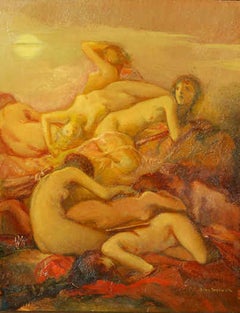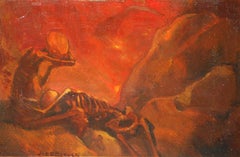1910s Art
to
775
1,112
399
387
170
162
Overall Width
to
Overall Height
to
7,551
20,722
159,117
237,121
1,870
2,282
4,818
6,334
5,958
15,306
20,892
24,825
17,371
13,293
5,328
428
311
137
135
45
19
17
6
5
1
1,281
854
31
1,479
743
596
429
413
387
224
146
142
140
135
135
130
104
99
85
83
81
66
60
816
583
462
445
363
101
47
34
24
22
789
361
1,247
906
Period: 1910s
Sorcieres
Located in West Hollywood, CA
Soricieres, depicts a covenant of witches as they convene at the top of a fabled mountain in Germany, the Broeken. The legend states that on a single night of the year, St. Walpurgis...
Category
Symbolist 1910s Art
Materials
Oil, Panel
Price Upon Request
Gehenne
Located in West Hollywood, CA
Belgian Symbolist artist Jan Frans DeBoever (1872 - 1948), created symbolist/allegorical paintings throughout his lifetime. He centralized on allegorical and literary subjects, generally depicting the constant struggle of good vs. evil. This is consistently reflected by images of beautiful women interacting with skeletons, gargoyles and demons.
An original oil on panel, Gehenne depicts two cowering skeletons as they languish at the gates of hell...
Category
1910s Art
Materials
Oil, Panel
Price Upon Request

